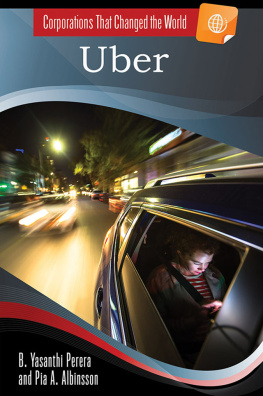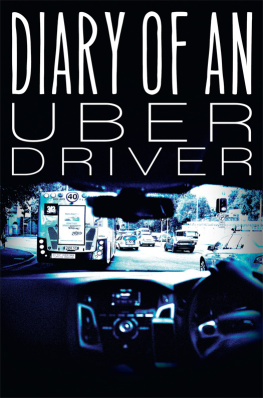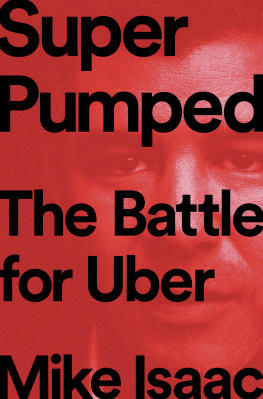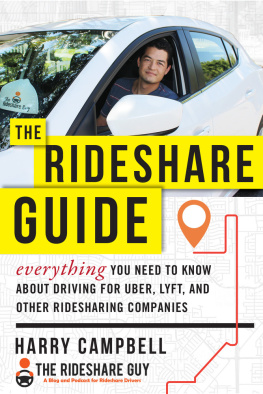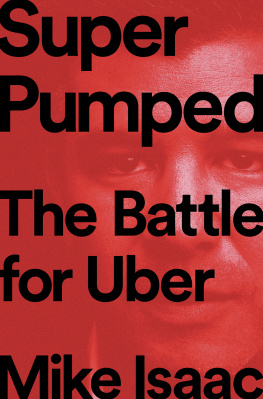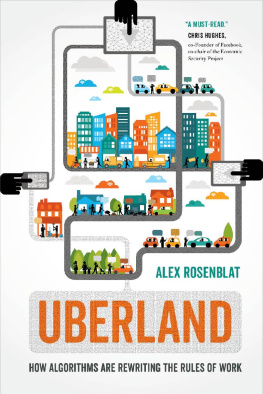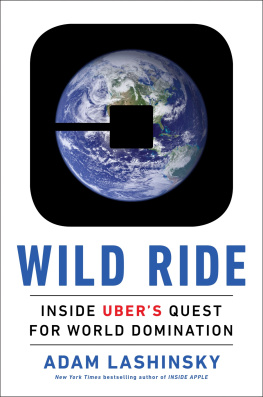B. Yasanthi Perera and Pia A. Albinsson
Copyright 2020 by B. Yasanthi Perera and Pia A. Albinsson
All rights reserved. No part of this publication may be reproduced, stored in a
retrieval system, or transmitted, in any form or by any means, electronic, mechanical,
photocopying, recording, or otherwise, except for the inclusion of brief quotations in a
review, without prior permission in writing from the publisher.
This book is also available as an eBook.
For my much loved and respected parents, B. C. and Diana Perera, and my ever supportive brother and sister, Hemantha Perera and Rasika George.
B. Yasanthi Perera
For my parents, Paula Tangen and John Allan Albinsson; my loving husband, David; and our two daughters, Emmelie and Evelynne.
Pia A. Albinsson
Contents
by Merlyn A. Griffiths
To understand the importance of this book, one need not look too far. We are in an era some have deemed the uberfication era, categorizing the innovative disruption brought about by new business models like Uber that merged consumer demand with app-enabled digital technology, bringing about the commercialization convenience.
The authors eloquently outlay Ubers avant-garde paradigm shift, which envelops public sharing of private property with seemingly boundless engagement. As such, this book provides a context to visualize the emergence of Ubers positive disruption as a key facet in the evolution of collaborative transportation and public sharing of private spaces.
The paths and thoughts of great researcher-scholars converged to create this dynamic book. I had the pleasure of meeting Dr. Pia A. Albinsson at the International Workshop: Recent Developments in Research for Collaborative Consumption held on May 14, 2018, at Brunel University in Uxbridge, London, UK. We were both invited speakers who presented research on the defining moments, consumption demarcations, and the collaborative future of the sharing economy. Recognizing strong tenets in our respective research talks, an alliance was inevitable. In June 2018, through an e-meet, I met Dr. B. Yasanthi Perera, a coauthor of Dr. Albinsson, and we three set a cooperative course toward creating new research that would further explicate knowledge and understanding of the sharing economy and, in particular, negative externalities resulting from the creation of contrived surplus. Over the next four months, we produced Contrived Surplus and Negative Externalities in the Sharing Economy, which we submitted to the Journal of Marketing Theory and Practice , and which was published in September 2019.
Knowing the diligence and practicality of the approach to this book, readers will not only enjoy reading but also notice several elements that make this book unique. First is the captivating representation of the good, the bad, and the ugly of Uber. The authors left no stone unturned in discussing the goodthe rise to profitability and entrepreneurial opportunities for drivers; the badlawsuits, alleged theft of intellectual property and the use of Greyball tactics; and the uglysexual harassment and discrimination practices. In this way, a balanced perspective is given, allowing the reader to draw their own conclusions.
Second is the challenge for dominance and the strategic approach taken by Uber to ensure its supremacy in the marketplace. The organizations leadership has been met with the seemingly formidable tasks of reshaping the corporate culture and on-the-dime repositioning in its short 10-year history. The authors point to the global reach of the company and the people power base, shifting the driver-rider dynamics of ground transportation.
Third is the lessons to be learned through the constructive, bench-markable strategies, relevant across a myriad of industries. Ubers presence has created obsolescence in the transportation industry, forcing the stalwarts of taxi and mass transit to rethink strategic business practices and competitive sustainability. In the same light, delivery of packages, food, and nonperishables is the tip of the proverbial iceberg, in that Uber has the ability to digitally mobilize a host of drivers, riders, and subscribers to perform on demand in numerous capacities that could result in greater cross-industry innovative disruptions.
Any business leader who has a desire to peer into the proverbial future to see the potential of collaborative service production and delivery need only to read this remarkable book.
Merlyn A. Griffiths, PhD
Associate professor of marketing and coauthor of
Mastering the Art: An Entrepreneurial Guide
to a Profit-Driven Marketing Plan
University of North Carolina at Greensboro
We are fascinated by collaborative consumption that occurs within the context of the sharing economy and how companies such as Uber and Airbnb have challenged industries and changed consumption patterns within a span of a few short years. In fact, Pia took her first solo Uber ride in Santa Rosa, California, in 2017. When Luis, the Uber driver, arrived in his brand-new Prius, Pia, ever curious about collaborative consumption and peer-to-peer sharing activities, proceeded to have an interesting conversation with him about his experiences as an Uber driver. This curiosity has remained so that, having researched various aspects of collaborative consumption for over 10 years, we embraced the opportunity to write this book, Uber , as part of Greenwood/ABC-CLIOs Corporations That Changed the World series. Uber, through its technological platform approach, truly is a company that has changed the world: its innovations have advanced quickly, and it has disrupted various marketplace sectors, most notably the ride-hailing industry. In this book, we tell the story of Uber from its inception in 2009 to present.
First, for the sake of transparency, despite having utilized Ubers services when traveling in larger metropolitan areas on many occasions, we do not claim to be expert Uber users. We have relied primarily on newspaper sources, Ubers many websites (including their brand extensions such as Uber Eats, Uber Freight, and Uber Health), and other credible sources on Uber and the sharing economy.
With this said, in this book, we present a snapshot of what we find to be the most descriptive characteristics of Uber as an organization, including the main events that have shaped its culture, and its astounding innovative capabilities. Accustomed to writing scholarly articles, this project proved to be more challenging than we anticipated. Besides the sheer volume of information available about the company as well as the speed with which it continues to evolve, there was limited publicly available information on certain topics such as its finances as Uber only became a publicly traded company on May 10, 2019, at which point much of the book had already been written.
How did this writing collaboration come into being? We, now close friends, met at New Mexico State University in 2002 when we both worked for the universitys Department of Housing & Residential Life. Our paths briefly crossed again when we entered the Master of Business Administration program albeit in different cohorts. However, a few years later, when Pia was in the Marketing PhD program and Yasanthi in the Management program, with our offices a few doors apart, we started collaborating on research. Interestingly, our first published research paper in the Journal of Consumer Behaviour was on collaborative consumption in the context of community clothing exchanges.

